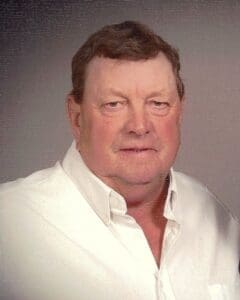As one of the longest-running businesses in Clay County, the Neill-Schwensen-Rook Funeral Home dates back before 1881. The location was opened as a joint furniture store/funeral home – a common practice at the time, and underwent several owners and name changes throughout its lifespan.
Until 1967 it operated the town’s ambulance service – another normalcy for the time – at which point they donated their two ambulances to the Clay County Hospital.
Its first modern namesake to purchase was Mert Schwensen Sr. in 1929. In total, three generations of Schwensens would serve the location as funeral directors, as well as two generations of Rooks. The latter of which, Preston Rook, is the current president.
He is one of three licensed funeral directors and embalmers; the location also has an assistant director. They average about 125 funerals in a year’s time, with the majority of those following cold and flu season, Rook said. However, he said there’s never a year that completely follows the pattern. Their slowest year was 99 funerals a few years ago and their busiest: 145 in 2009.

Rook said, having grown up near the business, he knew what he was getting into when attending mortuary school. After all, he played hide and seek in the casket room with his brother, he played on the office typewriter during visitations. And in a pinch, he had helped his father, the original Rook namesake, Beuford, to pick up and deliver bodies, or with funerals.
Originally Rook graduated with an elementary teaching degree and taught briefly. But the funeral home was short-staffed and Rook went to embalming school in 1995.
“It wasn’t a surprise,” he said. “I knew what was going to happen.” In fact the only time in his career the funeral process has surprised him was during his first removal from a nursing home. He reached under to move the person and they were still warm.
“But other than that there really hasn’t been anything horribly shocking.”
As funeral directors, the staff’s job are to meet with families, help with arrangements, sell merchandise, like caskets or mementos, for instance, a necklace or small urn if a loved one is cremated. They help people choose caskets and vaults; a vault holds the casket to keep out dirt and water and are required by most area cemeteries to help keep the ground solid. They run funerals and help with paperwork. There’s clothing for visitation – if there will be a visitation – church planning, and transportation to cemeteries or churches. Or, if someone is cremated, the body and remains are taken to and from Salina, the closest crematorium.

They file death certificates, which are needed for life insurance policies, investment accounts, and deed-able properties. Or, say a loved one is canceling a DIRECTV account, they will need a certified copy.
There’s papers, having KPERS go direct to the funeral home, which avoids a tax draw, or selling pre-need insurance or annuities.
Then of course, is the embalming process. Rook said with prep work and the embalming the process can take between 90 minutes to two hours. The body is cleaned, mouth and eyes, closed, and formaldehyde is inserted via a the circulatory system.
“What embalming does is pulls water out of tissue, it’s kind of a technical thing but it turns it into one giant protein cell.” Because bacteria can only grow at the end of a protein, by creating one cell, the process creates only two ends rather than thousands, he said.
From there they add makeup for a viewing and put in care and effort to make a loved one look presentable. Rook said it’s important to have at least one person from the family view the deceased.
“Once an a while we tell them it’s not something they want to see, but we try our best so we can at least give some type of closure.”
One of the hardest parts of the job training, however, is learning to work with families, Rook said.

“Probably out of all of it that is the most difficult, and that really can’t be learned in school,” he said. “You have to actually sit across the table from a family and experience that.”
Though each of their employees has years of experience, he said they handle different situations by sometimes having multiple team members talk with a family, or it something isn’t clicking, they will switch out and have someone else venture a subject.
“In every job you will have that one person where it doesn’t matter what you do, but maybe if someone says it a different way or just a different personality then it will click.”
As for learning to deal with the grief – or others dealing with grief – Rook said it helps to have a personal connection.
“Honestly being in a small community where I know the people, I find it easier to work with them. I know their parents, or their kids, or whoever we’re burying, and I find that connection.”
He said of his training, that wasn’t the case. “I was in Kansas City and didn’t know a single person. It was so cold and I just didn’t like that,” he said. “But here, they come through the door and they know us.”
Pictures: top, merchandise like urns, flag displays, necklaces, and more are offered for loved ones to view while planning funeral or burial arrangements. Middle: caskets are on display for family members to view. Rook said their displays cost between $1,300 and $3,000, though they can order special items upon request. For instance, Michael Jackson’s casket, which was made of polished bronze and cost between $70-$80K.
Above: funeral directors/embalmers from left to right: David Coffman, Keysha Chaney, and Preston Rook. Not pictured, Allen Hamel, assistant funeral director.












